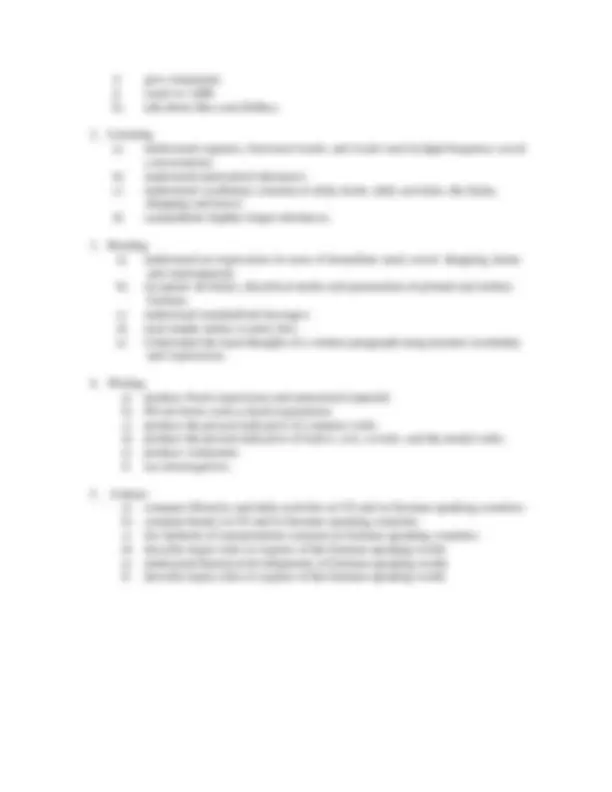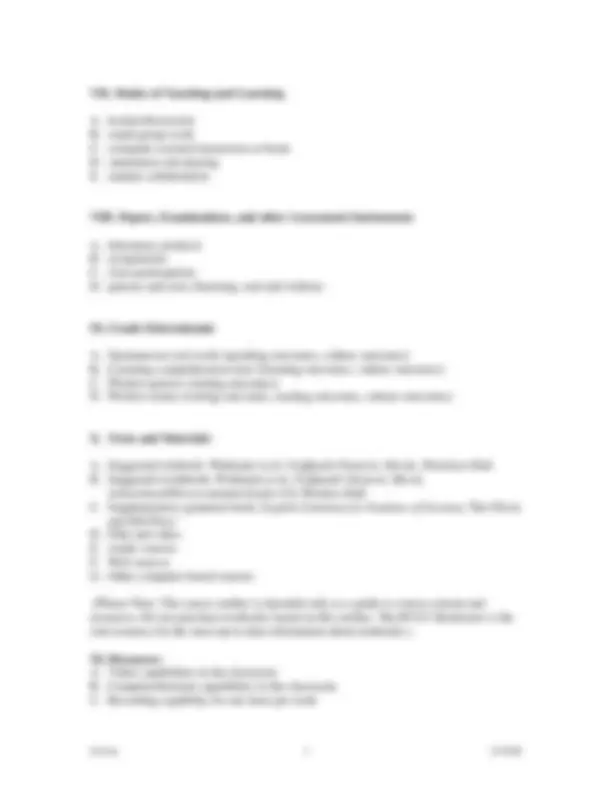





Study with the several resources on Docsity

Earn points by helping other students or get them with a premium plan


Prepare for your exams
Study with the several resources on Docsity

Earn points to download
Earn points by helping other students or get them with a premium plan
Community
Ask the community for help and clear up your study doubts
Discover the best universities in your country according to Docsity users
Free resources
Download our free guides on studying techniques, anxiety management strategies, and thesis advice from Docsity tutors
Material Type: Lab; Class: INTRODUCTION TO GERMAN I; Subject: German Studies; University: Raritan Valley Community College; Term: Spring 2009;
Typology: Lab Reports
1 / 5

This page cannot be seen from the preview
Don't miss anything!




I. Basic Course Information
A. Course Number and Title: GRMN-103 Introduction to German I
B. New or Modified Course: Modified
C. Date of Proposal: Semester: Spring Year: 2009
D. Sponsoring Department: Communication and Languages
E. Semester Credit Hours: 3
F. Weekly Contact Hours: 4 Lecture: 3 Laboratory: 1 G. Prerequisites/Corequisites: None
H. Laboratory Fees: Yes
I. Name and Telephone Number or E-Mail Address of Department Chair: Laurie Reynolds lreynold@raritanval.edu
II. Catalog Description
This course is designed for students beginning German or with fewer than two years of German in high school. The primary goal of the course is to develop basic listening and speaking abilities, to build up basic vocabulary, and to develop effective reading and writing strategies. Students will expand and deepen their knowledge gained in class activities through various exercises given as homework. In-class exercises are supplemented activities in the laboratory.
II. Statement of Course Need
This course is designed for students beginning German or with fewer than two years of German in high school. The primary goal of the course is to develop basic listening and speaking abilities, to build up basic vocabulary, and to develop effective reading and writing strategies. Students will expand and deepen their knowledge gained in class activities through various exercises given as homework. In-class exercises are supplemented activities in the laboratory.
IV. Place of Course in College Curriculum
A. Free Elective B. This course serves as a General Education course in humanities C. Partial fulfillment of the foreign language requirement D. This course has traditionally transferred as the first semester of a German language sequence.
V. Outline of Course Content
A. Grammar:
B. Vocabulary:
i) give commands. j) count to 1,000. k) talk about likes and dislikes.
OAA/je 5 3/5/
VII. Modes of Teaching and Learning
A. lecture/discussion B. small-group work C. computer-assisted instruction at home D. simulation role playing E. student collaboration
VIII. Papers, Examinations, and other Assessment Instruments
A. laboratory products B. assignments C. class participation D. quizzes and tests (listening, oral and written)
IX. Grade Determinants
A. Spontaneous oral work (speaking outcomes, culture outcomes) B. Listening comprehension tests (listening outcomes. culture outcomes) C. Written quizzes (writing outcomes) D. Written exams (writing outcomes, reading outcomes, culture outcomes)
X. Texts and Materials
A. Suggested textbook: Widmaier et al, Treffpunkt Deutsch , 4th ed., Prenctice-Hall B. Suggested workbook: Widmaier et al, Treffpunkt Deutsch , 4th ed, Arbeitsbuch/Hörverständnis/Audio CD , Prentice-Hall C. Supplementary grammar book: English Grammar for Students of German , The Olivia and Hill Press D. Film and video E. Audio sources F. Web sources G. Other computer-based sources
(Please Note: The course outline is intended only as a guide to course content and resources. Do not purchase textbooks based on this outline. The RVCC Bookstore is the sole resource for the most up-to-date information about textbooks.)
XI. Resources A. Video capabilities in the classroom B. Computer/Internet capabilities in the classroom C. Recording capability for one hour per week